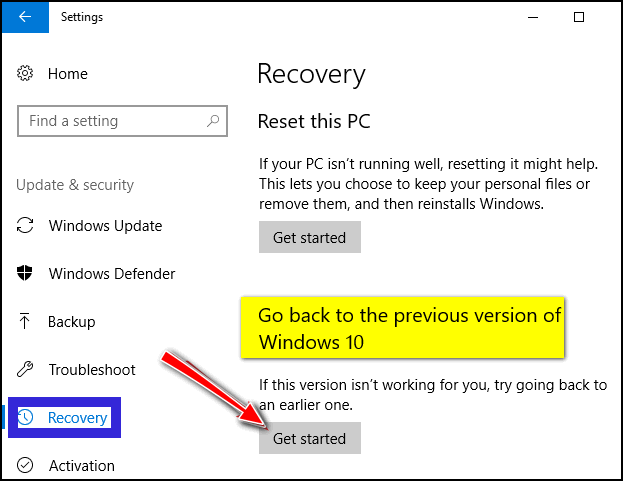The Right Way to Go Back to the Previous Version of Windows 10
Windows 10 May 2021 Update (Version 21H1) is available and slowly rolling out to Windows 10 users. If the update causes you major problems, the information in this article will help you make it like it never even happened.
We want to remind you again of an IMPORTANT feature of Windows 10 that allows you to go back to your previous version of Windows 10 without affecting your programs or files.
This feature is only available after a version update (such as the “May 2021 Update” aka Windows 10 Version 21H1); regular (cumulative updates) can be uninstalled.
But remember, you only have 10 days to go back to the previous version of Windows 10
By default, you have 10 days after you update to a new version of Windows 10 to go back to the previous version of Windows. Using the option to go back to the previous version of Windows 10 preserves your files, installed programs, settings and reverts your Windows 10 version to the previous version of Windows 10.
IMPORTANT! Do not use System Restore, System Reset, or Fresh start to fix problems with a version update.
How to go back to the previous version of Windows 10
If a Windows 10 version update, such as Windows 10 May 2021 Update (Version 21H1), causes you significant problems, the first thing you should do is this:
1. Right-click on the Start button and click “Settings”
2. In Settings click “Update & Security”
3. In “Update & Security” click “Recovery”
4. In Recovery, you may have three options “Reset this PC”, “Go back to the previous version of Windows 10” and “Advanced startup”. If it has been well past 10 days since the Windows 10 version update was installed, you will not see “Go back to the previous version…” at all.

.
If you don’t see “Go back to the previous version of Windows 10” or the “Get Started” button is grayed out:
a.) The update was not a Windows 10 version update
b.) Too much time has passed since the major update was installed. By default, you have 10 days to go back to the previous version after a version update.
c:) If you see the option but the “Get started” button is grayed out, then you waited too long and you no longer have the option to go back to the previous version of Windows 10.
If you have problems with updates other than Windows 10 version updates, you can uninstall the update(s) this way:
1. Right-click the Start button and click Settings.
2. In Settings, click on Update & security.
3. In Update & security, click on Windows Update.
4. In Windows Update, click on Advanced Options.
5. In Advanced Options, click on View your update history.
6. In Update history click on Uninstall updates and a list of updates will appear. The date of each update will be shown on the far right of the list. You can uninstall updates from there.


could not find any where but here to write you and tell the renewal went through but the last time it took days to get it resolved some thing about some periods in my email. this time it felt like the same thing was happening I clicked on renew on the software and it took me to the place on your site and I failed to see the 24 hour time to download it so I am so sorry if I caused you guys any trouble I guess I am getting worse with age and sickness. I closed out the complaint as resolved, and no I do not want a refund.